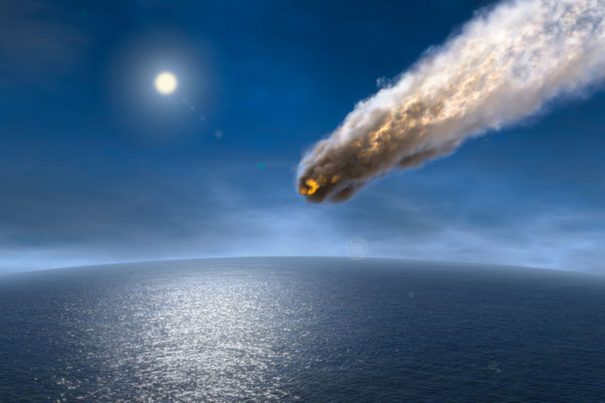
Astrophysicist warns humanity will eventually be wiped out by an asteroid strike… “just a matter of time”
Wednesday, June 28, 2017 by Tim Wesley
http://www.futuresciencenews.com/2017-06-28-astrophysicist-warns-humanity-will-eventually-be-wiped-out-by-an-asteroid-strike-just-a-matter-of-time.html

Mankind’s days could already be numbered. According to a leading astrophysicist, it’s just a matter of time before an asteroid strikes the Earth and – gasp – wipe out the human race. It sounds like something that only happens in movies, but it’s a reality that we could soon face, especially since there are thousands of potentially hazardous objects in space that can hurtle down the planet.
Dr. Alan Fitzsimmons, an astrophysicist at Queen University Belfast’s Astrophysics Research Centre, said that there are more than 1,800 asteroids that are floating around in space and that more are waiting to be discovered. What’s alarming is that any one of these can land on the planet and cause massive destruction. An encounter could easily obliterate a major city and erase man from the face of the Earth. He warned that it’s a case of when, rather than if, a collision will happen.
In November 2016, a small asteroid brushed past the Earth hours after scientists first spotted it. Named asteroid 2016 VA, it zoomed about 77,000 kilometers of the planet. It was believed to be between 23 and 72 feet and was traveling at an estimated 40,000 miles per hour. Millions of space rocks regularly orbit the planet; at present, scientists have managed to discover just 15,000 of them. Imagine how much more asteroids are floating in space, at distances that are alarmingly near. Imagine if one of them decides to pay us a visit.
Experts have warned that man is not ready for an impact. There’s pretty much nothing man can do if an asteroid hits the Earth, especially since there are so many of them out there. “It is important to know that scientists and engineers have made great strides in detecting Near-Earth Asteroids and understanding the threat posed by them,” said Dr. Fitzsimmons. (Related: Proof that Earth is bombarded by 10 times more asteroids than previously thought.)
Although most of these are harmless, experts say that it’s still possible that one asteroid would take everyone by surprise, just like what happened at Tunguska in Siberia in 1908. On that day, an asteroid exploded in the atmosphere and created an air burst three to six miles from the Earth’s surface. The air burst was strong enough to flatten trees and turn them on their roots and kill reindeer. The explosion was so strong it was equivalent to 185 Hiroshima bombs. After the event, scientists were unable to find a crater or any kind of meteoric remnant.
In 2013, an unknown object slammed into the atmosphere and exploded above the city of Chelyabinsk in Russia. This explosion created a shock wave that shattered thousands of windows, wounding thousands of people. Scientists believe that the object that crashed was about 66 feet wide.
Furthermore, in January 2017, an asteroid that was as big as a ten-story building passed by the planet. Imagine the disastrous effects a close encounter like that can create.
The National Aeronautics and Space Administration (NASA) defines asteroids as small, rocky objects that orbit around the sun. These are smaller than planets and mostly live in the main asteroid belt, which is the region between Mars and Jupiter. They can also follow the orbital path of planets, which means asteroids can share the same path with Earth. That makes impacts very likely.
According to experts, asteroids cross paths with us from time to time. And although it’s a rare occurrence, an asteroid that’s a fifth of the size of the infamous 6.2 mile “dinosaur-destroyer” can spell the end for the human race. It would be like having 10 million Hiroshima bombs explode, with a shocking impact that can flatten everything within a 186-mile radius. Dust and debris would envelop the planet and life would perish.
There’s really nothing we can do but wait. Dr. Joseph Nuth, a researcher at NASA’s Goddard Space Flight Center in Maryland, said asteroid explosions are “extinction-level events, things like dinosaur killers, they’re 50 to 60 million years apart, essentially. The biggest problem, basically, is there’s not a hell of lot we can do about it at the moment.”
Sources include:
Tagged Under: Tags: asteroid impact, NASA, SHTF, Space





